Blog Archives
Grey Fantail catching the sun
Early one morning, after some fairly ferocious rain, everyone was seeking sunlight and somewhere to dry out. This little Grey Fantail sat still on a branch for several minutes. Well, what passes for still, in a fantail’s world!
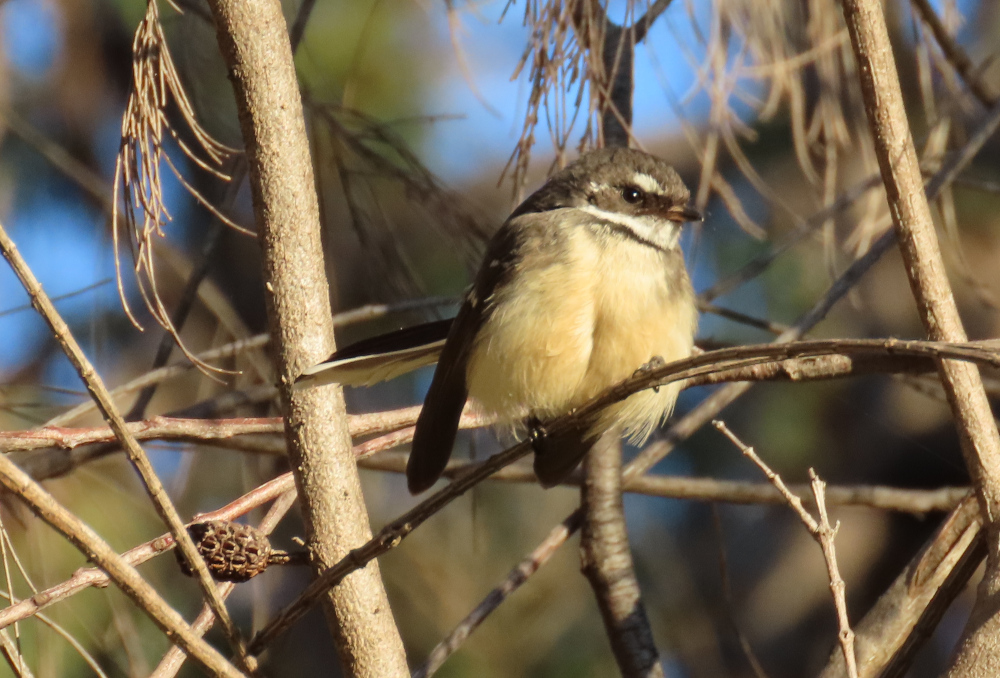
From the way it’s fluffing out its feathers and holding its wings, I’m sure it’s exposing as much of itself to the sun as possible!

Common name: Grey Fantail
Scientific name: Rhipidura fuliginosa
Approximate length: 14-17 cm
Date spotted: 3 June 2024 (winter)
Location: Manly Dam Reserve, New South Wales, Australia: 33°47’01.7″S 151°15’10.3″E
Grey Fantail waving its tail
Grey Fantails are fairly common around my neck of the woods. The problem is that they move so fast, it’s hard to get them in a camera frame. A couple of days ago, one of the little birds kept going back to the same tree to show off its skills. So, with a bit of patience, I was able to get some video footage:
In the video, you can see the bird’s typical behaviour pattern: it makes its way up a tree trunk, waving its tail, then it drops suddenly down to ground level, before starting again. In the background, the orange Banksia flower heads glow in the sunlight.
Here’s a still picture of that fanned tail catching the light:
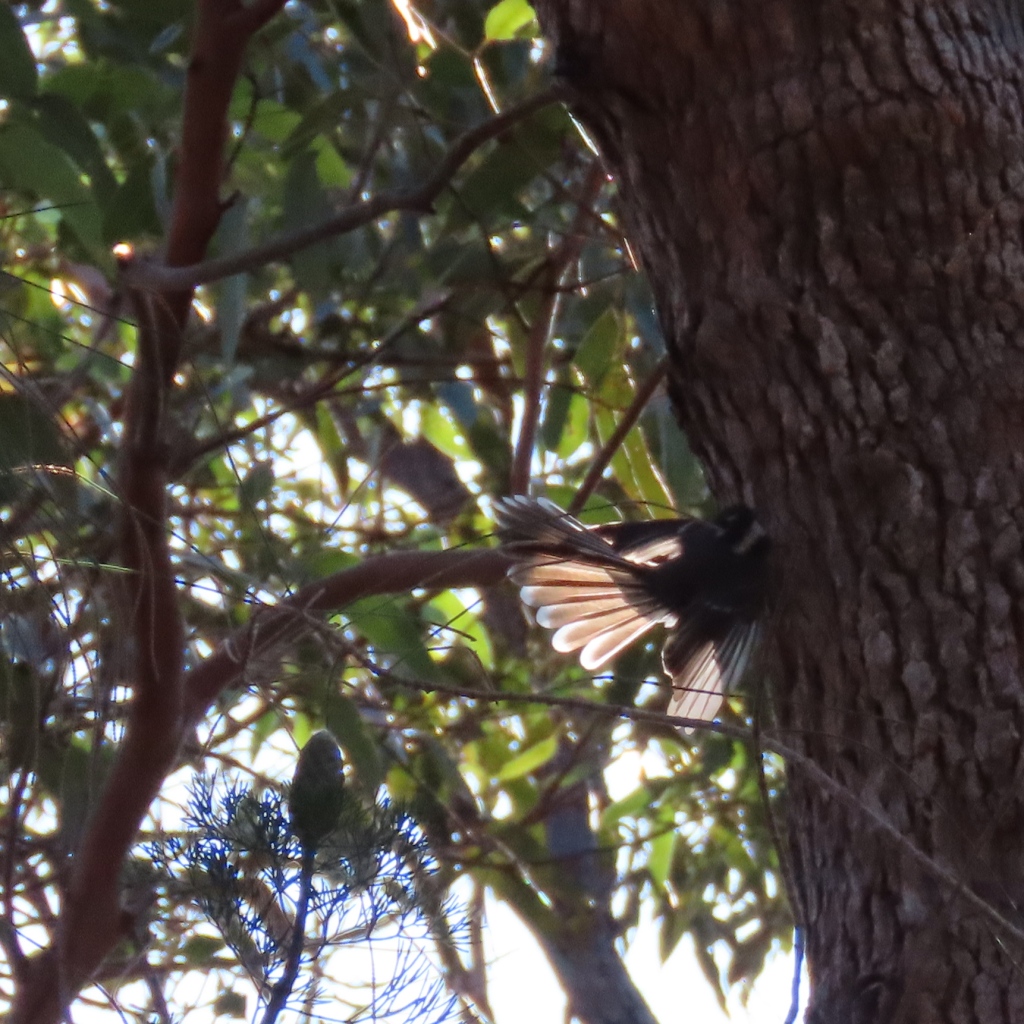
A couple of slightly-fuzzy images give you a better idea of what the bird looks like:
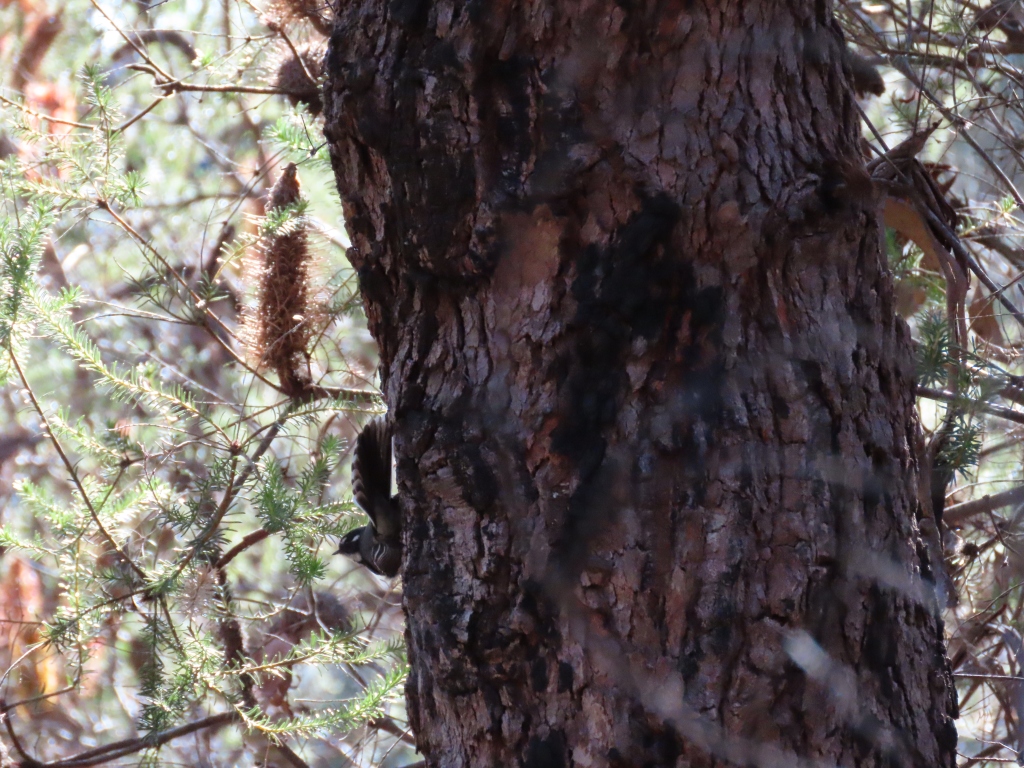
It’s a small bird (about 15 cm from head to tail). This one is quite dark in colour, with its black head and collar markings below the white throat.
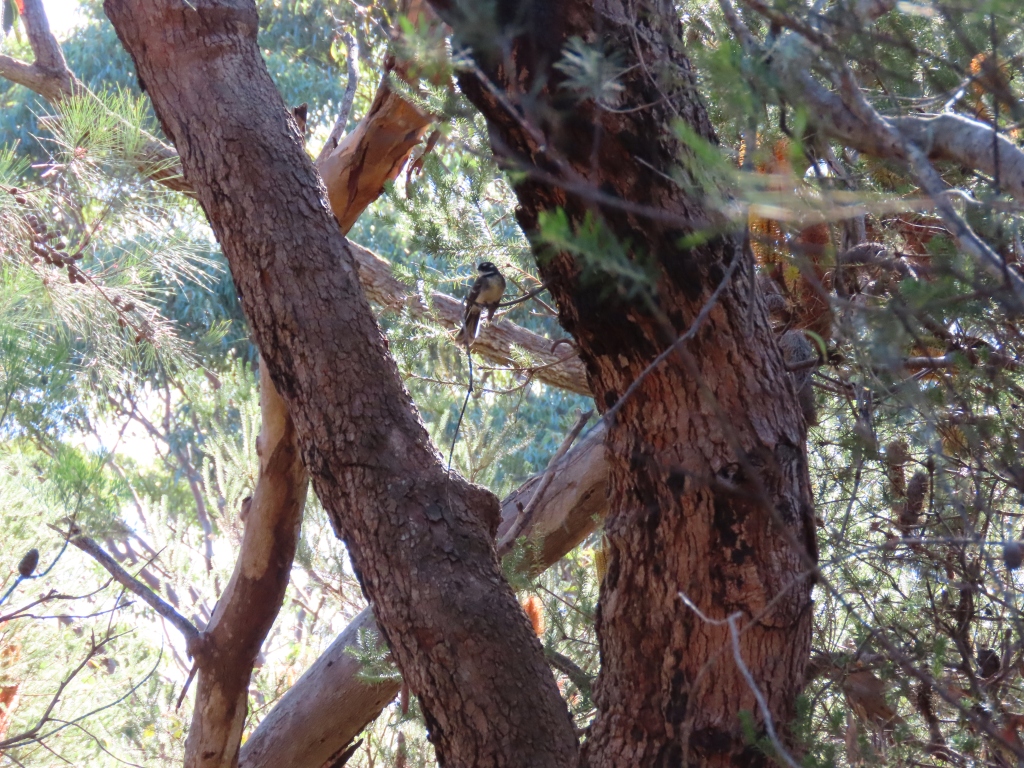
A few weeks ago, I saw another Grey Fantail in a location close to this one. Both birds were on the shores of Manly Dam, about 700 meters apart. This one is quite a lot lighter in colour:


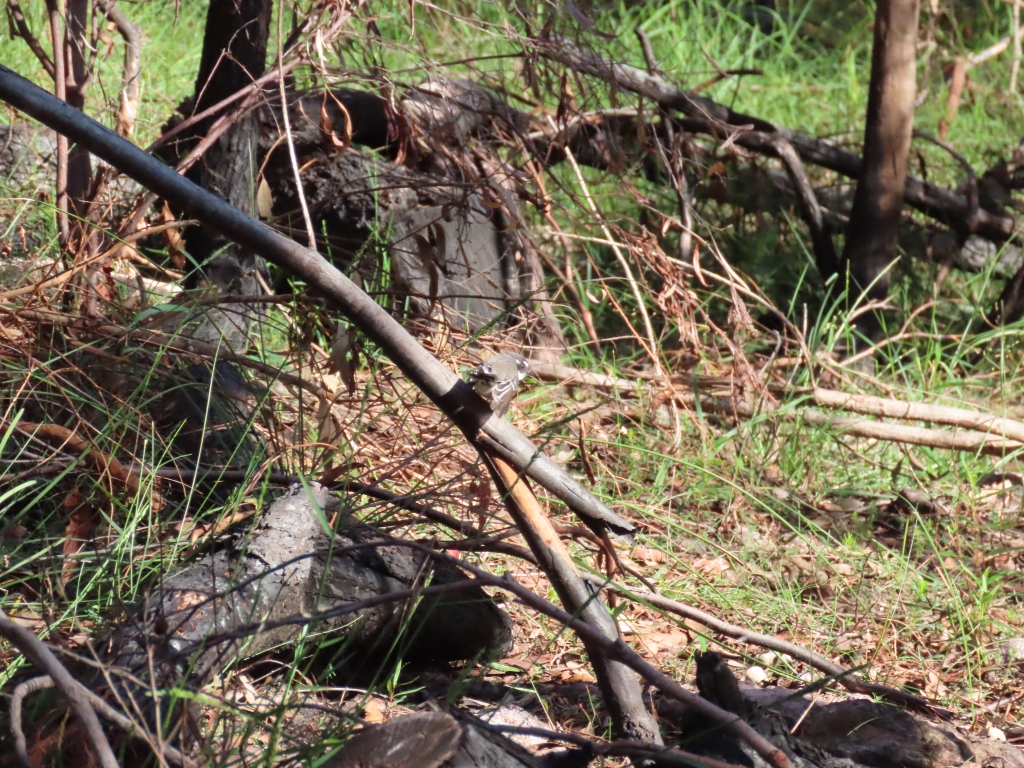
If you’d like to hear what Grey Fantails sound like (squeaky) or see other videos and photos of these birds, check out the list of my fantail blog posts.
Common name: Grey Fantail
Scientific name: Rhipidura fuliginosa
Approximate length: 14-17 cm
Date spotted: 16 June and 10 June, 2023 (winter)
Location: Manly Dam Reserve, New South Wales, Australia: 33°46’52.4″S 151°15’07.2″E and 33°46’37.9″S 151°14’48.5″E
Grey Fantail
This is only the second time I’ve managed to get a picture of a Grey Fantail. Grey Fantails are smaller than Willie Wagtails, and softer in colouring. They make a similar squeaky call, but not quite as piercing as Willie Wagtail.
I’ll try to get a good photo of a Grey Fantail, if one of them will stay still long enough! In the meantime, here’s the earlier video that I took of one of these birds, about three years ago. The bird was showing off its tail-fanning skills.
Common name: Grey Fantail
Scientific name: Rhipidura fuliginosa
Approximate length: 14-17 cm
Date spotted: 4 September 2020 (spring)
Location: Manly Dam Reserve, New South Wales, Australia: 33°46’23.8″S 151°15’05.8″E
Grey Fantail fluttering and waving its tail
Every now and then, while walking in the bush near Sydney, I see a bird fluttering up and down a tree and waving its tail in a merry dance. These birds move fast and don’t stay in one place for long. It’s hard to take a photo, especially as they’re usually deep in the undergrowth.
Today I managed to video one of these showoffs. As you’ll see, I had to follow the bird in its random jaunts to various branches of the tree. Now that I had a video, I could identify the bird. It’s a Grey Fantail, according to my bird book. Specifically, I think it’s one the alisteri race, which is the most common in the Sydney region.
Common name: Grey Fantail
Scientific name: Rhipidura fuliginosa
Approximate length: 15 cm
Date spotted: 13 August 2017 (Early spring)
Location: Manly Dam National Reserve, New South Wales, Australia: 33°46’16.1″S 151°14’47.5″E

